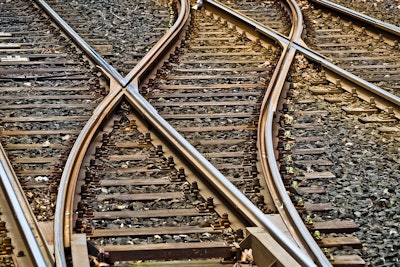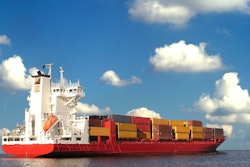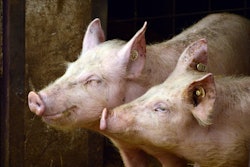
Employees need to be able to recognize hazards in the rail yard that could potentially cause harm to personnel, equipment, or commodity.
Detailed planning, proper training, and communication are key components for any shuttle load/unload operation.
Effective Communications
Prior to working around railcars, a set of requirements needs to be established between the rail crew and facility employees. Since a loading/unloading operation typically is loud by nature, depending solely on voice and radio communication is not always efficient.
One way to address this issue is to use lights during dark hours or a spotter relaying hand and arm signals during daylight hours. Regardless of which method(s) chosen, always ensure that the person(s) you are working with understands what you are trying to communicate before an action is initiated.
Working around Railcars
When an employee or crew member is required to go between or work on the end of cars, the following practices are recommended:
Engine operator has a clear understanding of the work to be performed
Engine operator is notified by employee/crew of movement between cars and verifies by radio
Engine operator ensures the equipment will not move until the employee/crew requesting protection has reported by radio that they are no longer between or on the end of the equipment
The employee/crew going between or working on the end of equipment is to wait until all movement of equipment has stopped and the slack has adjusted
When stepping out from between cars or power units, employees/crew are to watch for equipment moving on adjacent tracks or roadways
Track Etiquette
• Do not cross within 25’ of standing cars
• Do not cross in front of approaching cars
• Step over, not onto, the tracks, frogs or switches
• Do not walk between tracks • Do not sit on the track or rail structures
• Do not sit on the steps or handrails of a moving power unit
• Do not attempt to mount, cross over, cross under or dismount a rail car while it is moving
Car Roof Operations and Roof Fall Protections
Environmental conditions, such as walkways made slippery by snow, ice, or rain, can cause workers to lose their footing and potentially slip off rail car roof tops.
Employees should not stand on any other portion of the car roof other than the walkway. Windy days can pose an additional hazard for workers on top of the cars.
Riding or standing on the roof of a moving car should only be done while the car is at the loadout spout and when the car is creeping or stopped. Additional safety training is advised for employees at facilities equipped with car roof fall protection systems.
Hopper Gates
Railcar hopper gates were designed to open and close easily. Damage, normal wear/tear and weather can all deteriorate a hopper gate to the point of it requiring additional help to move.
Tools, such as a large ratchet/socket combo or a pry bar, are often used. The safest way to use a pry bar is for the worker to have a secure grip, feet securely planted, and to pull up with the leg muscles minimizing back strain. To minimize the chance of injury, seek additional help.
Crossing over Cars
An employee should cross only between cars equipped with crossover platforms and hand holds. Always maintain a firm grip and be prepared for sudden movement.
Never step on a coupler, uncoupling lever, or draw bar while crossing through cars. Do not cross underneath a coupler, instead, find a car with a safe crossover platform. Never attempt to cross over while the cars are in motion.
Ensure that crossover platforms, ladders and handrails are inspected. If possible, use another car in the string to mount or cross between cars. Using a car drawbar as a step can be dangerous because each drawbar has several inches of slack and a foot can easily be caught if the car happens to move or is jarred.
NEVER CROSS UNDER A RAIL CAR!
Don’t forget the BLUE FLAG!
The practice of blue flagging keeps unauthorized engines and track mobiles from entering an occupied spur and striking parked rail cars or workers.
More safety information can be found at ngfa.org.
Disclaimer: The National Grain and Feed Association make no warranties, expressed or implied, concerning the accuracy, application or use of the information contained in this publication. Further, nothing contained herein is intended as legal notice. Competent legal counsel should be consulted on legal issues. Grain handling facilities should contact experienced safety and health legal counsel or a third-party expert if they have questions about the proper way to implement the items addressed in the document.









